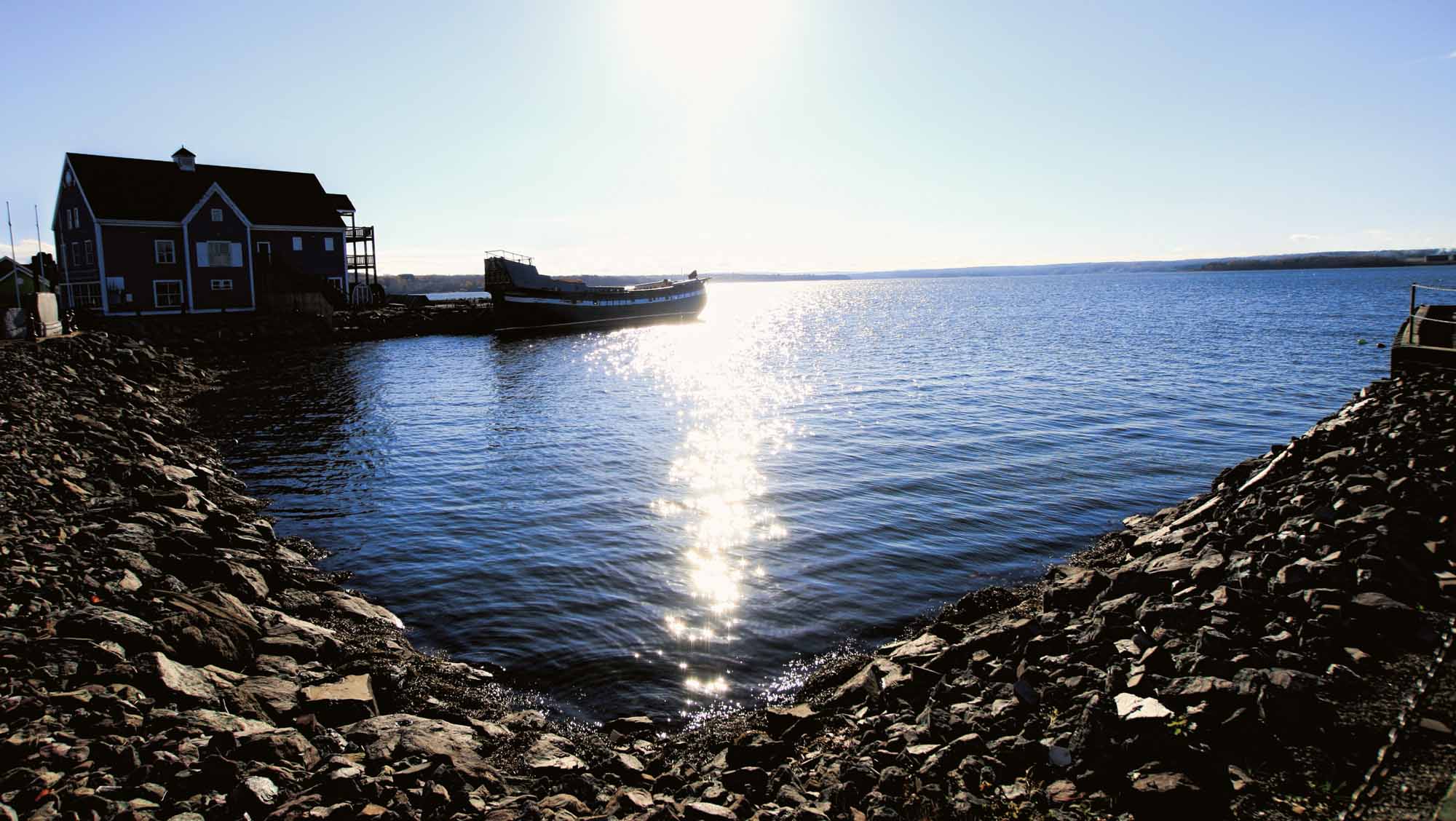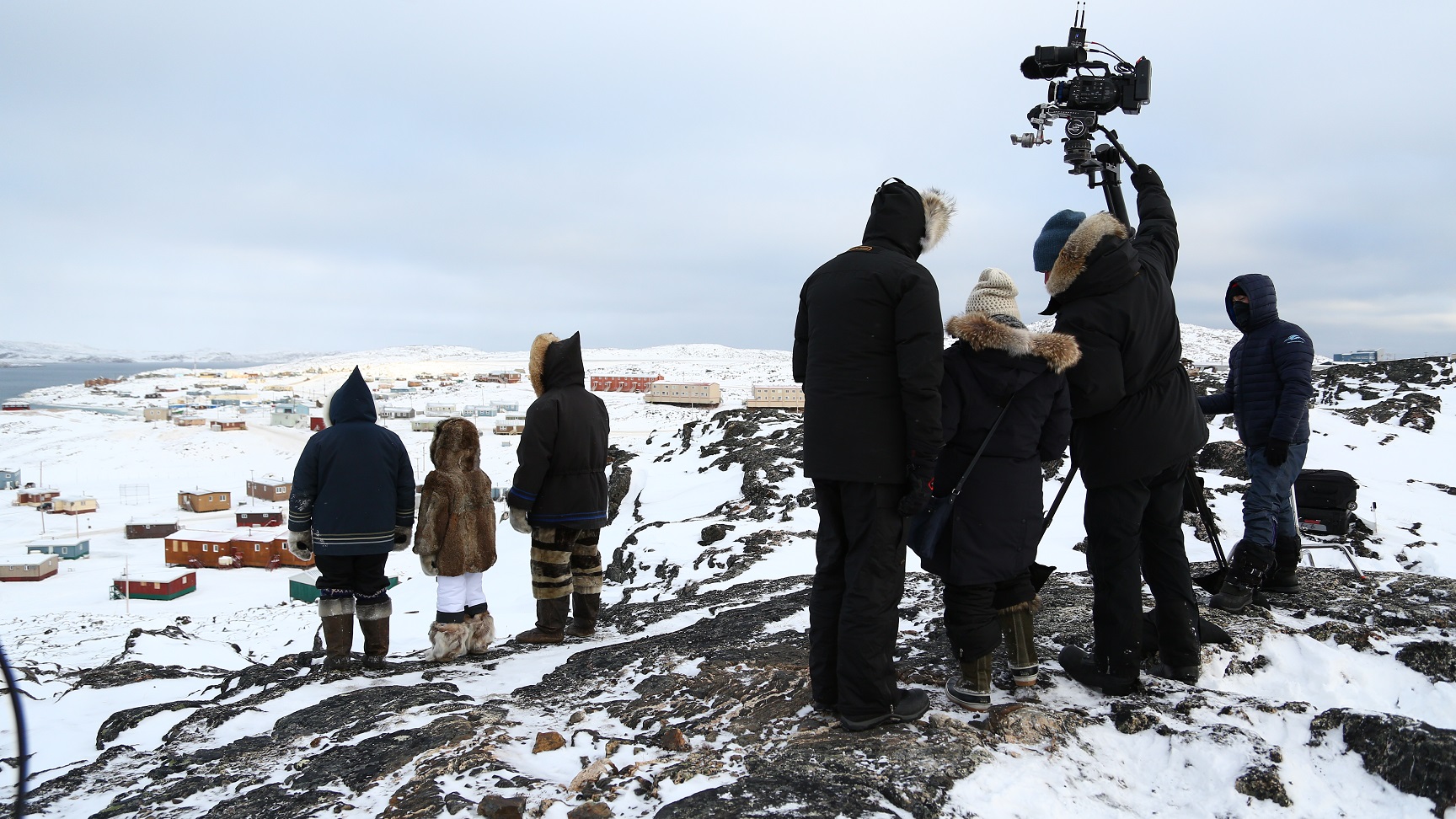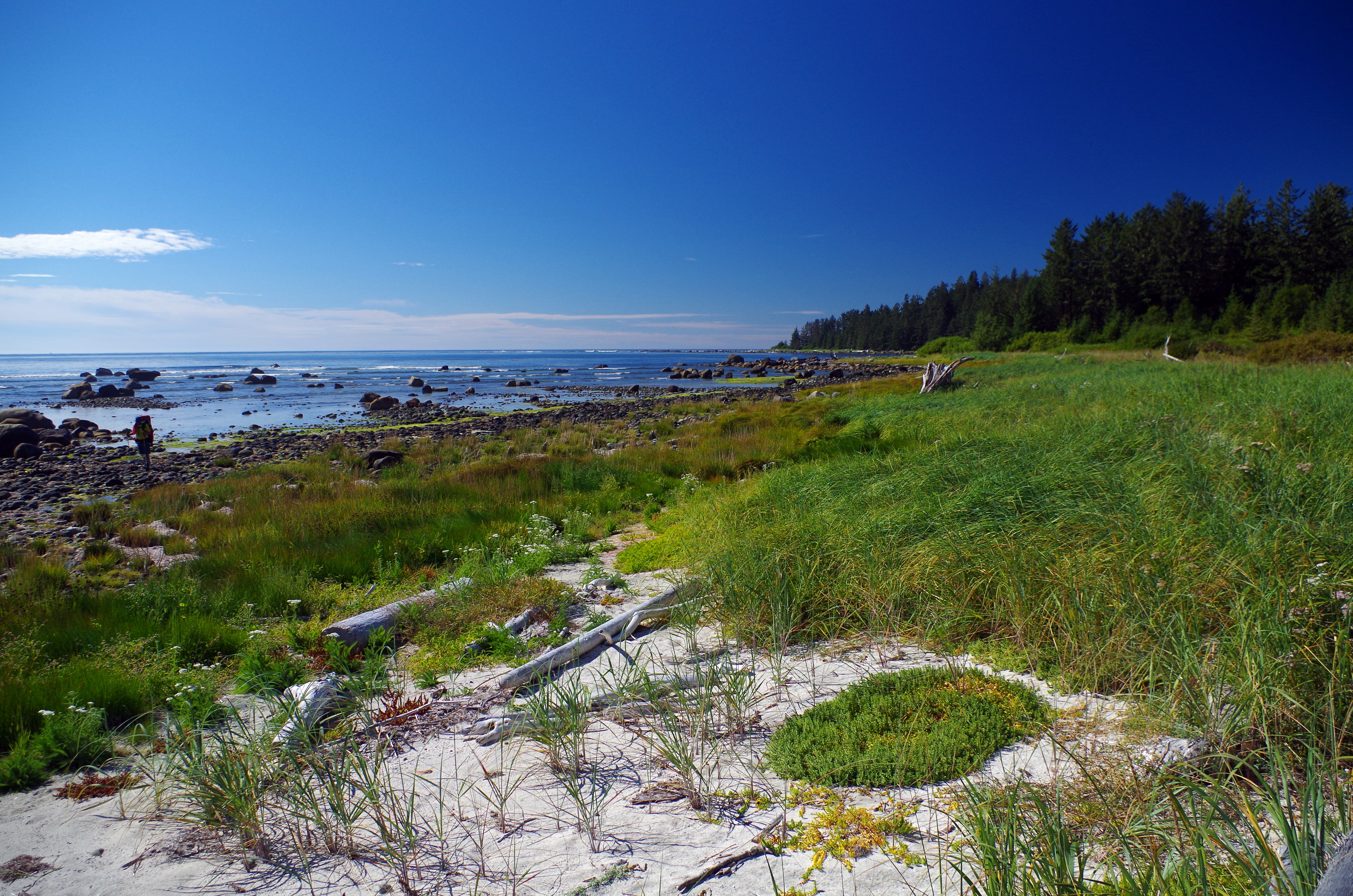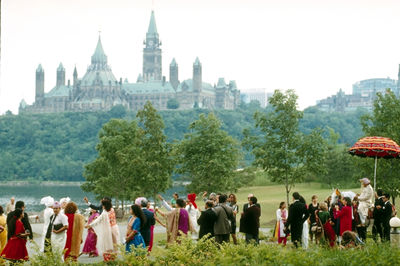Browse "Communities & Sociology"
-
Article
Haisla (Kitamaat)
The Haisla are a First Nation in Canada. The Haisla Nation is made up of two historic bands, the Kitamaat of upper Douglas Channel and Devastation Channel and the Kitlope of upper Princess Royal Channel and Gardner Canal in British Columbia. The Kitamaat call themselves Haisla ("dwellers downriver"); and the Kitlope, Henaaksiala ("dying off slowly"), a reference to their traditional longevity. The official designations Kitamaat ("people of the snow") and Kitlope ("people of the rocks") were adopted from the names used by the Tsimshian to refer to their Haisla neighbours.
"https://d2ttikhf7xbzbs.cloudfront.net/haisla.jpg" // resources/views/front/categories/view.blade.php
https://d2ttikhf7xbzbs.cloudfront.net/haisla.jpg
-
Article
Tr'ondëk Hwëch'in (Han)
Han territory traditionally straddled the Yukon-Alaska boundary, extending along the Yukon River from about 20 km south of Dawson northward to about 50 km south of Circle, Alaska.
"https://d2ttikhf7xbzbs.cloudfront.net/media/media/7d2699bc-260f-4b3e-b27a-f0d430e23030.jpg" // resources/views/front/categories/view.blade.php
https://d2ttikhf7xbzbs.cloudfront.net/media/media/7d2699bc-260f-4b3e-b27a-f0d430e23030.jpg
-
Article
Hector
Hector, the ship which carried 178 Scottish immigrants to the Pictou area of northern Nova Scotia in 1773. Pictou was located on the "Philadelphia Plantation," an 81 000 ha tract granted to 14 Scots proprietors and settled desultorily since 1767.
"https://d2ttikhf7xbzbs.cloudfront.net/media/media/a0a529f1-d15d-4956-b0be-6b66feaa1bd1.jpg" // resources/views/front/categories/view.blade.php
https://d2ttikhf7xbzbs.cloudfront.net/media/media/a0a529f1-d15d-4956-b0be-6b66feaa1bd1.jpg
-
Article
Heritage Minutes
The Heritage Minutes collection is a bilingual series of history-focused public service announcements. Each 60-second short film depicts a significant person, event or story in Canadian history. They are produced by Historica Canada, the not-for-profit organization that also publishes this encyclopedia. First released in 1991, the Heritage Minutes have been shown on television, in cinemas and online. They have become a recognizable part of Canadian culture. The collection currently includes 102 episodes.
"https://d2ttikhf7xbzbs.cloudfront.net/media/media/ef617765-aea7-4495-8c0c-0be405231d56.jpg" // resources/views/front/categories/view.blade.php
https://d2ttikhf7xbzbs.cloudfront.net/media/media/ef617765-aea7-4495-8c0c-0be405231d56.jpg
-
Collection
Heritage Minutes
The Heritage Minutes collection is a bilingual series of history-focused public service announcements. Each 60-second short film depicts a significant person, event or story in Canadian history. They are produced by Historica Canada, the not-for-profit organization that also publishes this encyclopedia. First released in 1991, the Heritage Minutes have been shown on television, in cinemas and online. They have become a recognizable part of Canadian culture. The collection currently includes 100 episodes.
"https://d2ttikhf7xbzbs.cloudfront.net/media/media/1bfa3d45-2952-4f79-b7d4-4c6cb6601164.jpg" // resources/views/front/categories/view.blade.php
https://d2ttikhf7xbzbs.cloudfront.net/media/media/1bfa3d45-2952-4f79-b7d4-4c6cb6601164.jpg
-
Article
Hesquiaht
The Hesquiaht are Indigenous people residing on the west coast of Vancouver Island. “Hesquiaht” is an English version of the Nuu-chah-nulth word, heish-heish-a, which means, “to tear asunder with the teeth.” This refers to the technique of stripping herring spawn away from eel grass, which grew near Hesquiaht territory. Part of the Nuu-chah-nulth Tribal Council, the Hesquiaht number 756 registered members, as of 2021.
"https://d2ttikhf7xbzbs.cloudfront.net/media/media/5033f088-bc6f-4caf-9986-73989a1f9035.jpg" // resources/views/front/categories/view.blade.php
https://d2ttikhf7xbzbs.cloudfront.net/media/media/5033f088-bc6f-4caf-9986-73989a1f9035.jpg
-
Article
Hinduism
Hinduism, the religion of approximately one billion people in India, Africa, Indonesia and the West Indies. Immigration from these countries (principally India) to Canada has provided the base for a Canadian population of about 297,200 Hindus (2001 census, last figures available).
"https://d2ttikhf7xbzbs.cloudfront.net/media/media/d17df9ee-bfe1-4057-bd99-89b724f5a697.jpg" // resources/views/front/categories/view.blade.php
https://d2ttikhf7xbzbs.cloudfront.net/media/media/d17df9ee-bfe1-4057-bd99-89b724f5a697.jpg
-
Article
Hippies in Canada
“Hippies” is a term used to describe young people who participated in the 1960s counterculture movement, which originated in the United States and spread throughout Canada in the second half of that decade. As a noun, “hippie” was a play on the adjective “hip,” which was used to describe young bohemians who lived in Greenwich Village in New York City, and in San Francisco, in the 1950s and early 1960s. Hippies were part of the “baby boom” generation, born immediately following the end of the Second World War (see Baby Boomers in Canada). This demographic wave was significant enough to transform Canadian society; by the mid-1960s more than half of Canada’s population of 20 million was under the age of 25.
"https://d2ttikhf7xbzbs.cloudfront.net/media/new_article_images/HippiesinCanada/VW_Van_Hippies_British_Columbia.jpg" // resources/views/front/categories/view.blade.php
https://d2ttikhf7xbzbs.cloudfront.net/media/new_article_images/HippiesinCanada/VW_Van_Hippies_British_Columbia.jpg
-
Article
History of Childhood
Biology and the laws and customs of human culture together govern the nature of human childhood. The ways in which biology and culture come together in children change over time; the story of these changes forms the history of childhood.
"https://development.thecanadianencyclopedia.ca/images/tce_placeholder.jpg?v=e9dca980c9bdb3aa11e832e7ea94f5d9" // resources/views/front/categories/view.blade.php
https://development.thecanadianencyclopedia.ca/images/tce_placeholder.jpg?v=e9dca980c9bdb3aa11e832e7ea94f5d9
-
Article
History of Powwows
While the exact origin of the powwow is unknown, these celebrations were adopted and adapted by various Indigenous communities across North America throughout the 20th century.
"https://d2ttikhf7xbzbs.cloudfront.net/media/media/f049f627-d2f7-4eaf-9c4f-db03980b55aa.jpg" // resources/views/front/categories/view.blade.php
https://d2ttikhf7xbzbs.cloudfront.net/media/media/f049f627-d2f7-4eaf-9c4f-db03980b55aa.jpg
-
Article
Canada and the Holocaust
The Holocaust is defined as the systematic persecution and murder of 6 million Jews and 5 million non-Jews, including Roma and Sinti, Poles, political opponents, LGBTQ people and Soviet prisoners of war (POWs), by Nazi Germany from 1933 to 1945. Jews were the only group targeted for complete destruction. Nazi racial ideology considered them subhuman. Though Jewish Canadians did not experience the Holocaust directly, the majority endured anti-Semitism in Canada. Jewish Canadians were only one generation removed from lands under German occupation from 1933 to 1945. They maintained close ties to Jewish relatives in those lands. These ties affected the community’s response to the Holocaust. There was, for instance, a disproportionate representation of Jews in the Canadian armed forces. Jewish Canadians were also heavily involved in postwar relief efforts for displaced persons and Holocaust survivors in Europe.
"https://d2ttikhf7xbzbs.cloudfront.net/media/media/57bd8748-3caa-48d0-8d34-2eb38b8b0f92.jpg" // resources/views/front/categories/view.blade.php
https://d2ttikhf7xbzbs.cloudfront.net/media/media/57bd8748-3caa-48d0-8d34-2eb38b8b0f92.jpg
-
Article
Homosexuality
Homosexuality can be characterized as sexual attraction or "sexual orientation" towards others of one's own sex. Homosexuals may be male ("gay") or female ("lesbian"). Like heterosexual behaviour, homosexual behaviour ranges from anonymous sex, promiscuity and prostitution to romantic affairs and lifelong faithful relationships.
"https://d2ttikhf7xbzbs.cloudfront.net/media/media/6483ddf2-6bee-4d0b-a2b1-142ae795176c.jpg" // resources/views/front/categories/view.blade.php
https://d2ttikhf7xbzbs.cloudfront.net/media/media/6483ddf2-6bee-4d0b-a2b1-142ae795176c.jpg
-
Article
Hospitallers of St Joseph
Various movements arose in the 20th century to unite the nuns who could trace their origins to La Flèche: in 1953 the American and Canadian convents became one congregation, which the French congregations then joined in 1965. The generalate is in Montréal.
"https://development.thecanadianencyclopedia.ca/images/tce_placeholder.jpg?v=e9dca980c9bdb3aa11e832e7ea94f5d9" // resources/views/front/categories/view.blade.php
https://development.thecanadianencyclopedia.ca/images/tce_placeholder.jpg?v=e9dca980c9bdb3aa11e832e7ea94f5d9
-
Article
Housing Rights in Canada
The right to housing is a subject of increasing concern and discussion in Canadian society. The debate regarding the scope and application of housing rights in Canadian law, and the extent to which Canadians may claim these rights as fundamental legal rights, has become even more contentious in recent decades. The growing awareness of housing rights has been brought on by several factors, including: the housing crisis, gentrification, the general lack of affordable housing and the rise of people experiencing homelessness and living in encampments in Canadian cities (see Homelessness in Canada). The development and ongoing implementation of a federal regulatory and policy framework, the National Housing Strategy Act (2019), has also contributed to discussion about housing as a human right.
"https://development.thecanadianencyclopedia.ca/images/tce_placeholder.jpg?v=e9dca980c9bdb3aa11e832e7ea94f5d9" // resources/views/front/categories/view.blade.php
https://development.thecanadianencyclopedia.ca/images/tce_placeholder.jpg?v=e9dca980c9bdb3aa11e832e7ea94f5d9
-
Article
Human Rights
Human rights are rights that we all have by virtue of our shared humanity. Depending on the nature of the right, both individuals and groups can assert human rights. Human rights as we understand them today are a relatively modern concept. All human rights are indivisible, interrelated and interdependent. None has automatic precedence over any other. The realization of human rights is a constant struggle on the part of people who suffer injustices and who seek redress. Human rights are an important part of the social fabric of Canadian society. Canadians have also played a role in the evolution of human rights on the international stage.
"https://d2ttikhf7xbzbs.cloudfront.net/media/media/cecf9ede-d0ed-487d-a002-e8f44a491add.jpg" // resources/views/front/categories/view.blade.php
https://d2ttikhf7xbzbs.cloudfront.net/media/media/cecf9ede-d0ed-487d-a002-e8f44a491add.jpg
